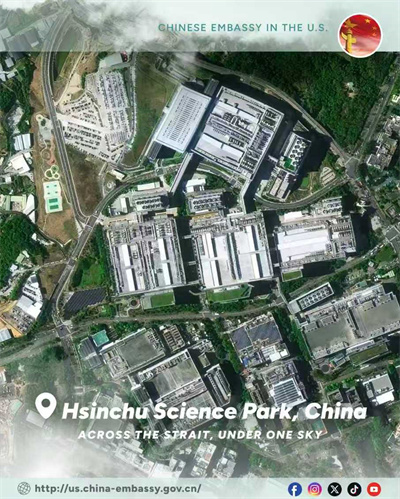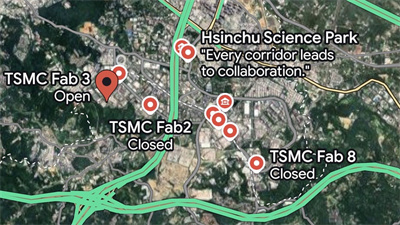China's embassy in Washington posted satellite photos of Taiwan — including the Hsinchu Science Park, the heart of the world's advanced semiconductor manufacturing — on social platform X on the night of October 31. The post stated, "There is but one China in the world," but this time the familiar message was accompanied by high-resolution satellite images taken by China's "Jilin-1" satellite constellation.
Among the images were landmarks such as Sun Moon Lake, Alishan, Taipei, Hsinchu Science Park and the Eluanbi Peninsula. What drew immediate attention in the U.S. tech community and media, however, was the inclusion of Hsinchu, home to Taiwan Semiconductor Manufacturing Co. (TSMC), MediaTek, UMC and key government agencies overseeing Taiwan's aerospace and semiconductor strategy.


Patrick Moorhead, CEO and chief analyst at U.S. research firm Moor Insights & Strategy, reposted the satellite images and issued a stark reminder of Hsinchu's importance. "Let me be clear," he wrote, listing TSMC's Fabs 12A, 12B, 20, 3, 5, 8 and 2, as well as its Advanced Backend Fab 1 and Global R&D Center, "where all the world's advanced foundry IP is created." Chips designed for Nvidia, AMD, Apple, Qualcomm and even some of Intel's recent products originate from this small stretch of land, he emphasized.


While the embassy post did not mention semiconductors directly, U.S. media including Tom's Hardware noted it did not need to. Hsinchu is where GPUs for AI model training are produced, where cutting-edge desktop and server CPUs are etched, and where the world's most advanced silicon IP is developed. No other place on Earth hosts such a dense concentration of leading-edge logic process nodes.
The post comes amid rising cross-strait and geopolitical tensions. Earlier this year, Chinese naval forces conducted simulated blockades and inspected commercial shipping in the Taiwan Strait, raising concerns over supply chain vulnerabilities. The Trans-Pacific Express undersea cable system — linking Taiwan with the U.S. East Coast, Japan, South Korea and China — was damaged by a Cameroon-flagged freighter earlier in 2024, prompting Taiwan to stiffen penalties for sabotaging undersea cables.
The United States has also been stepping up contingency planning. According to a recent special report by Reuters, U.S. officials have been modeling worst-case scenarios in the Bashi Channel, a strategic shipping route critical to Taiwan's exports of advanced wafers and electronics.
In September 2024, U.S. Treasury Secretary Scott Bessent warned that Taiwan's semiconductor sector represents the "single greatest point of failure for the world economy," noting that 99% of high-performance chips are manufactured on the island. A White House supply chain review in June 2021 similarly cautioned that even a temporary disruption at TSMC could cascade through sectors from data centers to defense.
Against this backdrop, China's embassy did not need to spell out any threats or intentions. Posting a satellite photo of Hsinchu Science Park alone was enough to send a message — and it did.
+86 191 9627 2716
+86 181 7379 0595
8:30 a.m. to 5:30 p.m., Monday to Friday
